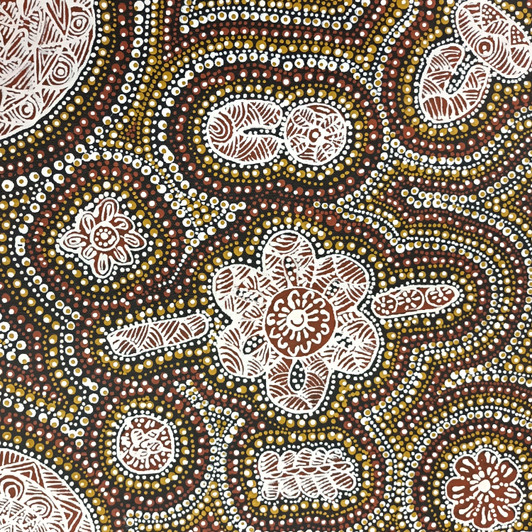
SP10177

1977
Language Group:Anmatyerre
Country:Ilkawerne (El-go-an-na) , Utopia Region, North East of Alice Springs, Northern Territory
Medium:Acrylic on Canvas and Linen
Subjects:Alpar (Rat-Tail Plant) Story, Awelye (Women's Ceremony), Ntang Artety (Mulga Seed) Dreaming, Ahakeye (Bush Plum) Dreaming, Awelye (Women's Ceremony) for Alpar (Rat-Tail Plant), Awelye (Women's Ceremony) for Alpar (Rat-Tail Plant) and Ahakeye (Bush Pl
Rosemary is the daughter of artists Paddy (dec) and Eileen Bird, and the granddaughter of Ada Bird Petyarre, a highly respected senior artist from Utopia. She is married to Clifford Tilmouth, and together they have two children. The family resides with their large extended family in the Utopia region.
Rosemary was taught the stories, songs and dances associated with her country, Ilkawerne, by the other women in her community. As she gains more experience, Rosemary continues to develop her artistic style, building on the rich cultural heritage passed down through her family.
Rosemary paints Awelye (Women's Ceremonial and Body Paint Designs) for Alpar, the rat-tail goosefoot or green crumbweed plant, is a small, erect herb that is sticky to touch and scented heavily of citrus. Growing especially well in Mulga tree communities, it is found in abundance in Rosemary's home in the Utopia Region, north east of Alice Springs.
Linear designs represent Awelye. These designs are painted onto the chest, breasts, arms and thighs. Powders ground from red and yellow ochre (clays), charcoal and ash are used as body paint and applied with a flat stick with soft padding. The women sing the songs associated with their Awelye as each woman takes her turn to be 'painted-up'. Women perform Awelye ceremonies to demonstrate respect for their country and the total well-being and health of their community.